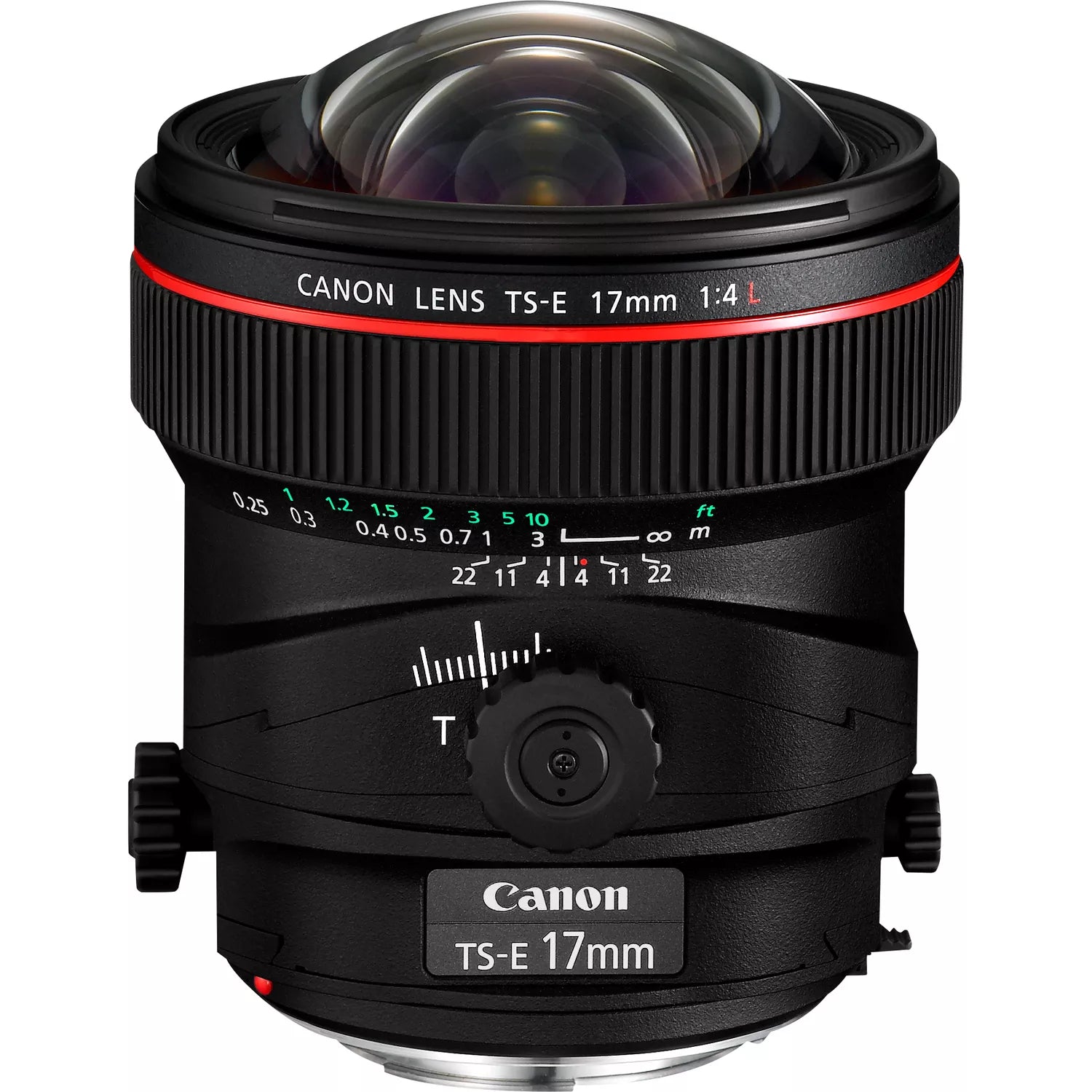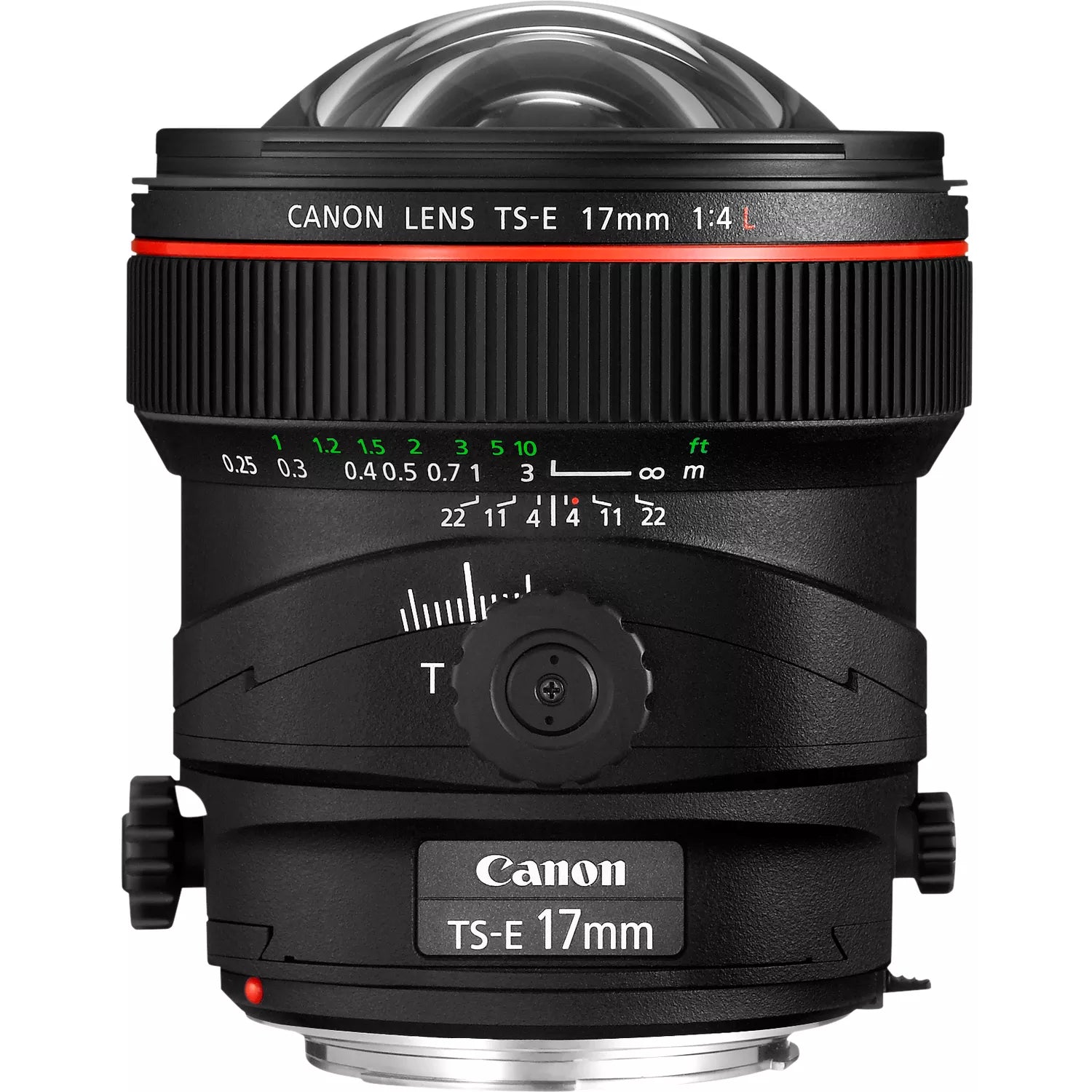Product Description
Canon TS-E 17mm f4.0 L Tilt and Shift Lens
- Architecture, interiors
- Professional L-series
- Tilt and Shift
Designed for architectural photography, the TS-E 17mm f/4L exhibits low distortion and excellent edge-to-edge sharpness, as well as independent rotation of the tilt and shift mechanisms.
Expanding the possibilities for tilt-and-shift photography
The TS-E 17mm f/4L is an ultra-wide angle tilt-and-shift lens, providing wide-angle views for cameras with APS-C and full frame sensors. Tilt and shift movements can be rotated independently of each other, allowing perspective and depth of field to be controlled separately, enhancing the flexibility of the lens.
Wide range of movement
With a 104° diagonal field of view, and +/-6.5° of tilt, +/-12mm shift and +/-90° of rotation, the TS-E 17mm f/4L is one of the most flexible lenses of its type. Locks on the tilt and shift mechanisms are also included, ensuring that unwanted movements are avoided.
High precision lens elements
A high-precision, large-diameter moulded glass aspherical lens element gives outstanding edge-to-edge resolution and low distortion. Chromatic aberration - common in wide-angle shooting - is combated by four UD (ultra low-dispersion) elements.
Subwavelength structure coating
Designed for use in digital photography, Canons patented lens element coating helps minimise the ghosting and flare caused by internal reflection and helps to deliver crisp, clear images.
Robust build quality
Canon L-series lenses are built to withstand regular use in the most testing environments. Weather and dust seals provide added protection. A lens hood and pouch are also included.
Lead-free optics
Environmentally friendly lead-free glass is used throughout the construction of the TS-E 17mm f/4L.
For full specifications click Here
Payment & Security
Your payment information is processed securely. We do not store credit card details nor have access to your credit card information.





















